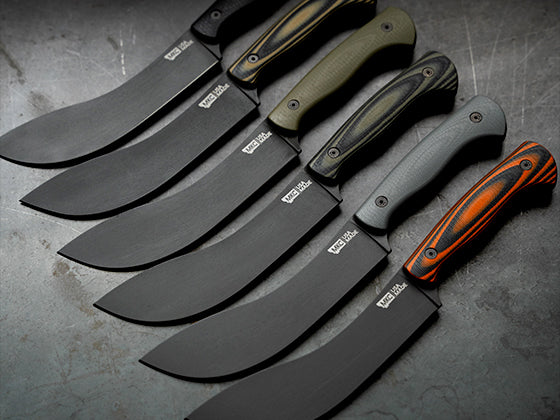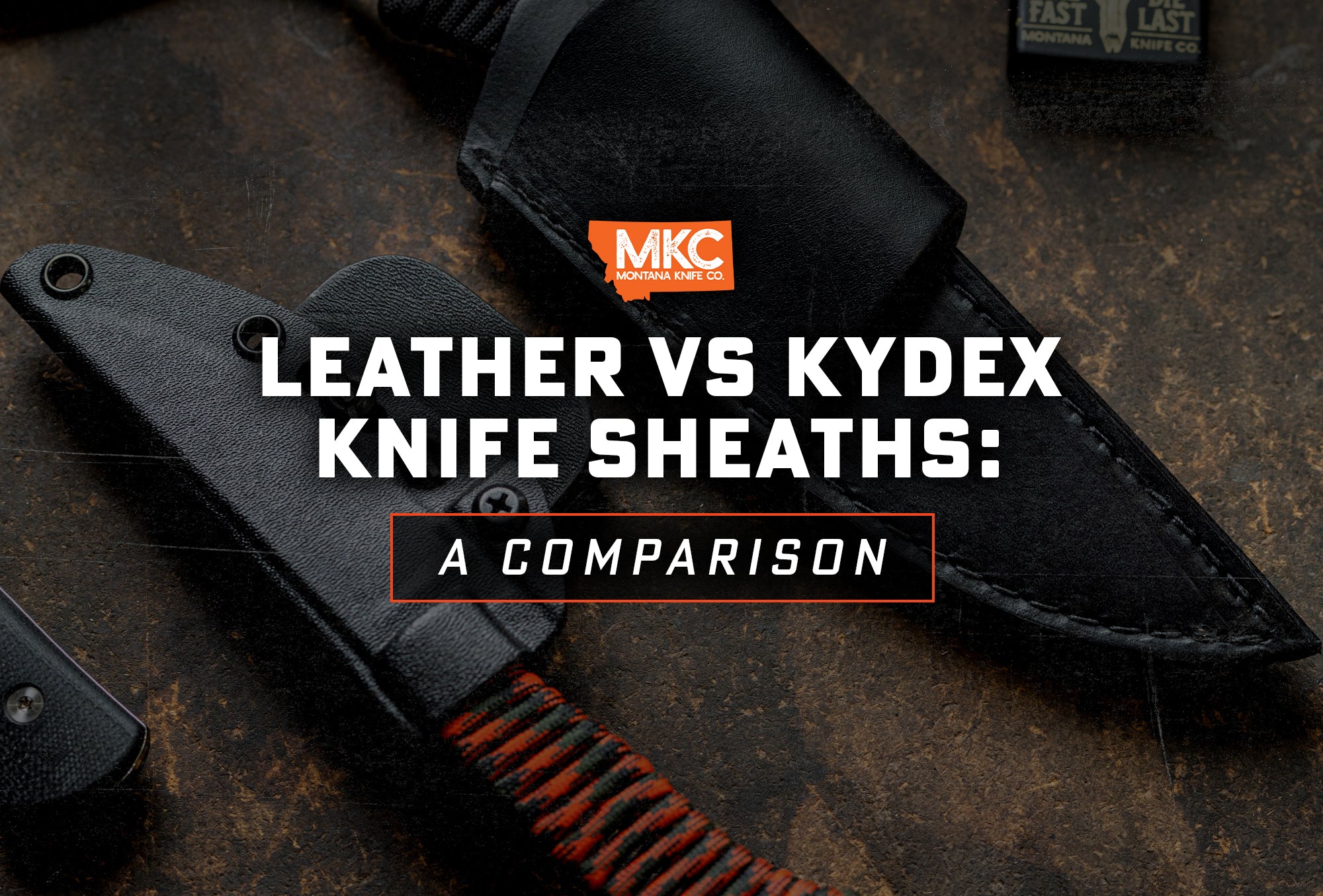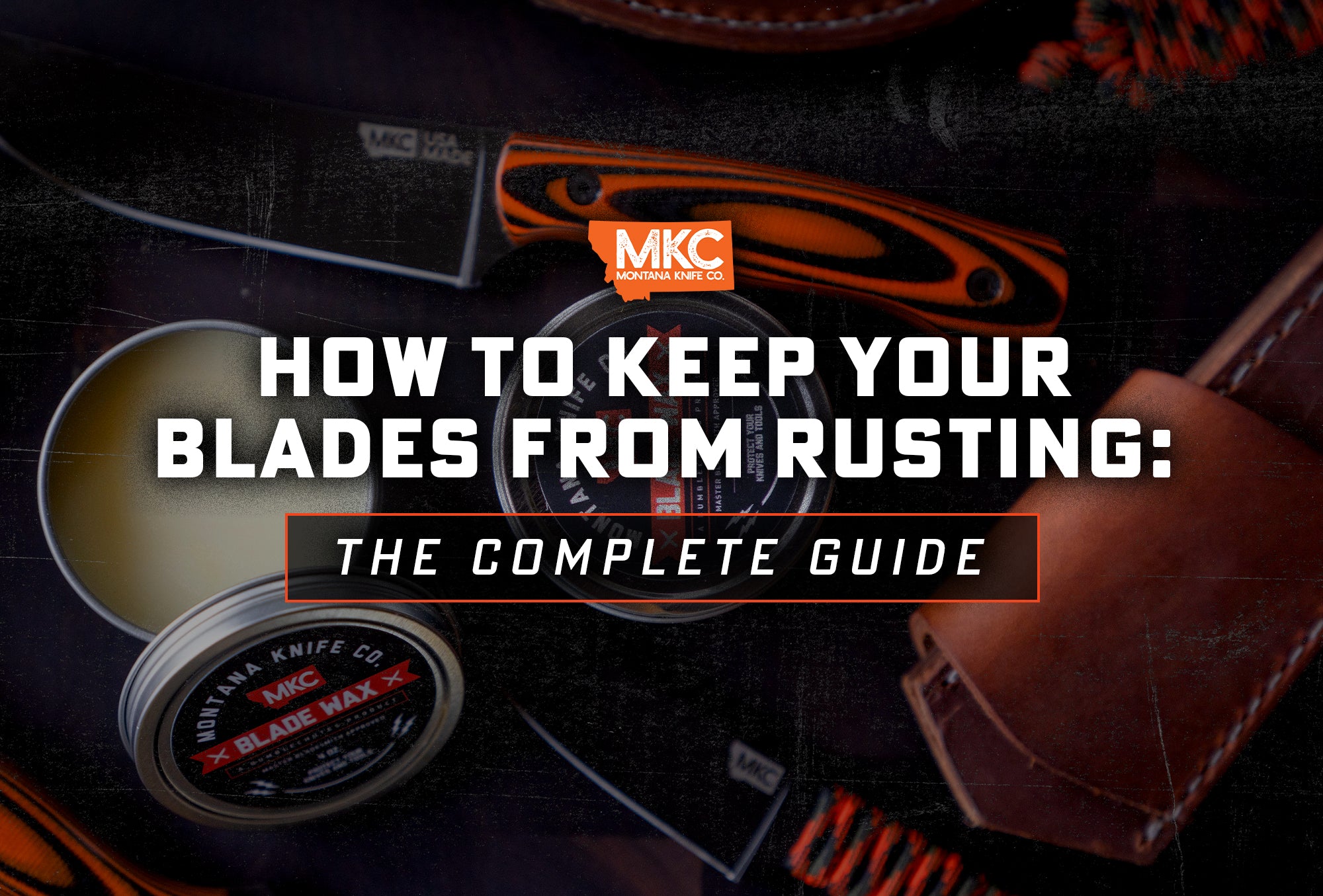In the last two years, Montana Knife Company has been fortunate to grow beyond what I could have imagined, gaining recognition throughout the hunting community and the country.
As a result, you may think we're a huge company with dozens of employees running a complicated operation. In reality, we're just a small group of hunters and fishermen creating American-made tools that help us do what we love.
We design with hunting in mind, and we build reliable tools that last. We're passionate about making affordable, high-quality knives that serve the needs of real working people.
I’m Josh Smith, co-founder and Master Bladesmith for Montana Knife Company, and this is the story behind why I started MKC.
Discovering Knife Making
I started making knives when I was 11 years old in the little town of Lincoln, Montana.

For Christmas that year, my parents bought me a blade by Rick Dunkerley, my little league baseball coach and an excellent bladesmith. Not long after that, Rick gave in to me bugging him and invited me up to his shop to teach me how to make knives.
After helping me with my first couple of blades, Rick told me that if I was serious about making knives, I needed my own shop. Even at age 11, I remember thinking I had found something I wanted to do for the rest of my life, so I was absolutely serious. I couldn’t get enough of it.
By saving money from mowing lawns and working for my parents, I was able to buy my first knife grinder and set it up in a corner of my dad's shop. That first grinder gave me the independence to start making knives entirely on my own.
After I made a mess of his shop, my dad decided it was time for me to have my own space. He enclosed a lean-to and set me up with a workbench and anvil. He even made everything full-sized to keep it functional as I grew, though that meant adopting a milk crate as a step stool for several years. My parents were always incredibly supportive of my knife making, something I appreciate even more now looking back.

I spent countless hours in that little shed, working before and after school and getting increasingly serious about my craft. My school science fair project even covered heat treating steel, which gave me the opportunity to sell my very first knives. I’ll never forget that my first customers were two of my teachers, who bought blades for $20 each.
Mastering the Art of Knife Making
At Rick's encouragement, I joined the American Bladesmith Society at age 12. After three years as an apprentice, I decided to create a set of blades to take the journeyman bladesmith test in Atlanta, Georgia. The test (which I’ll explain more in an upcoming article) was rigorous: A single knife had to chop through a one-inch rope, shave hair, and bend 90 degrees without breaking. Then five blades went before a panel of Master Smiths to judge for quality and craftsmanship.
You can imagine how elated I was when I passed the test and became the youngest journeyman knife maker in the world. It was a huge accomplishment for me, proving to myself and others that I could make knives at a professional level alongside people three to five times my age and despite not even having a driver’s license yet.
I continued to learn and practice as much as I could, and would have loved to take the Master Smith test as soon as the minimum two-year journeyman period ended. But being a teenager with school, work, and sports took a front seat until my second semester at Montana State University. I spent that semester preparing, and at age 19, I traveled to Atlanta to take the second and final of the two ABS tests.
For this test, the blades I forged had to cut one-inch rope, chop through a 2x4, shave hair, and bend 90 degrees. A panel of Master Smiths again judged five other knives for craftsmanship and quality. It was an intense test, but I passed and became the youngest Master Smith in the world. I’ll never forget what an honor it was to be recognized on a national level for doing something I loved. I didn’t realize it then, but I’d only just begun.

My dream was always to start my own knife-making company. Knowing that, my mom even registered the name Montana Knife Company with the state for me. College didn’t seem like the right path to take me where I wanted to go, so instead I worked in excavation and construction for several years, got married, and moved to Frenchtown, Montana, where I still live today. In Frenchtown, I became a full-time custom knife maker.
Making custom knives one at a time to support a family which grew to include four children was challenging and unpredictable, especially before I could sell my work online. With the crash of 2008, I wasn’t sure about the future of high-end custom knife making, so I ended up taking a job as a lineman.
Despite my long-held dream, the timing never seemed quite right to start Montana Knife Company. I didn’t feel ready personally or financially, and a divorce left me caring for four children as a single dad. There wasn’t much time for knife making. I just had to do what I could to get by and support my kids.
But the dream was still very much alive. And after a few years, I met my now wife, Jessica, who encouraged me to go all-in on starting Montana Knife Company.
While I wasn't quite ready to quit my day job, I built some prototypes and took them to an event called WinterStrong in South Carolina. I had the privilege of meeting so many great people at that event, including my future co-founder, Brandon Horoho.
Initially, Brandon helped me create marketing materials and a website for MKC, but he quickly demonstrated just how much more he was capable of. In the fall of 2020, I offered him a partnership in the business, and we officially launched MKC.
Those first knife prototypes sold, and then a few more. I finally quit my job — which, to her credit, my wife had never stopped encouraging me to do — and gave my full time to MKC on December 30, 2020.
The process was slow at first, but the more knives we made, the more orders we had. When we figured out how to really increase my knife-production capacity, business exploded, and our vision for MKC finally became a solid reality.
What I Love About MKC
One of the things I love most about MKC is that the company has a Master Bladesmith at the helm. Most bigger knife brands are run by people in suits, not by knife makers with a passion for the craft. These executives may know business, but they have no idea how to make what they're selling, let alone how to use it.
I'm also proud that we've grown our company the old-fashioned way: no debt, and just hardworking people who actually use the products they're selling. MKC is a testament that the American dream is alive and well.
MKC Challenges
Here in western Montana, we're not surrounded by much industry or even other knife making companies. It's a challenge to find and attract people with the right background and experience for this kind of work, especially since the cost of living here has risen.
But Montana is an amazing place, especially for hunters. I grew up on the edge of the Bob Marshall Wilderness hunting and fishing, and we name our MKC knives after the places, animals, and mountain ranges of Montana. We’re sticking around, and we hope to attract others who love this place as much as we do.
Another challenge is that we make everything in the United States, which is non-negotiable for me. We don't make knives overseas, and we source every bit of material possible from the U.S. Our knives are always manufactured, built, assembled, finished, and sharpened here in the United States.
The challenge is in competing with other companies that use cheap labor and materials. We're not racing to the bottom of the price barrel, not trying to make the cheapest knife to sell in Walmart. We build working knives for working people, and working people expect quality.
On the other hand, sourcing and making everything in the U.S. has its advantages, too. In a time when so many companies are experiencing manufacturing and shipping delays because of overseas supply chain issues, we’ve been able to keep right on working.
Why I Started MKC
Back when I was making custom knives, the blue-collar people I interacted with every day — who are just like me — couldn't afford them. Those types of knives run in the thousands of dollars and are more like expensive art pieces. While I love making them, they aren't practical for the people I know.
At the same time, I didn't see stores carrying truly high-quality knives built for the average man or woman to actually use in the field. Instead, they carried knives made with cheap, low-quality materials not worthy of the hard-earned money people spent on them.
Too, none of these bigger companies made knives with hunting in mind. Hunting was an afterthought. They had pocket knives or knives for everyday carry. They had bells and whistles thought up by a designer. If they had a hunting knife, you could tell by holding it that they either didn't know what they were doing, or they didn't put much thought into it.
I wanted to create a knife company that built knives for function and purpose. I wanted to make high-quality, well-built blades that my friends and family could afford. And that's what we've done.
MKC is unique because we don't just produce knives, we also use them. We make knives for hunters, and we are hunters. We know exactly what hunters need from their knives because that's who we are, too.

What I Believe About Knife Making
Everything we see on shelves today is built to be thrown away. I've even seen knife companies advertising blades you can throw away once they get dull. That really bothers me.
Knives were one of man's first tools, and I firmly believe we shouldn't make them to be thrown away.
We pass down so few things in society now — knives, guns, artwork, and jewelry, mainly. But now we're making knives, which can carry so much history and last for generations, just to throw away.
Montana Knife Company wants to bring the tradition back. We make our knives to be used by you, by your kids, and by your grandkids. They're handmade, they work hard, and they're built to last.
Developments in Knife Making
Back when I was 11, if you wanted to learn knife making, you had to physically find a knife maker willing to teach you in their shop. But things have changed.
Today, if you want to learn knife making, you can jump on YouTube or Instagram and find instructional videos. You can read articles or even watch TV shows like Forged in Fire. Although I do still recommend picking up books by some of the old masters if you're serious about progressing, so much knowledge is accessible online to get you started.
Another change is in the way you find customers to purchase your knives today. In the past, you'd have to set up a shop or find customers in person. People used to write me actual letters to get a knife. We'd correspond back and forth, and it could take months to nail down an order.
Now, if you want to sell your blades and share your work, you can do that online as well.
Where MKC Is Headed
Moving forward, we want to grow Montana Knife Company into one of the biggest and most respected American-made brands in the country. We'll employ great people and pay them well, and we'll never ship production overseas (and I don't say NEVER often).
Most importantly, we'll continue making working knives for working people at a quality they can be proud of and a price they can afford.
by Josh Smith, Master Bladesmith and Founder of Montana Knife Company






































